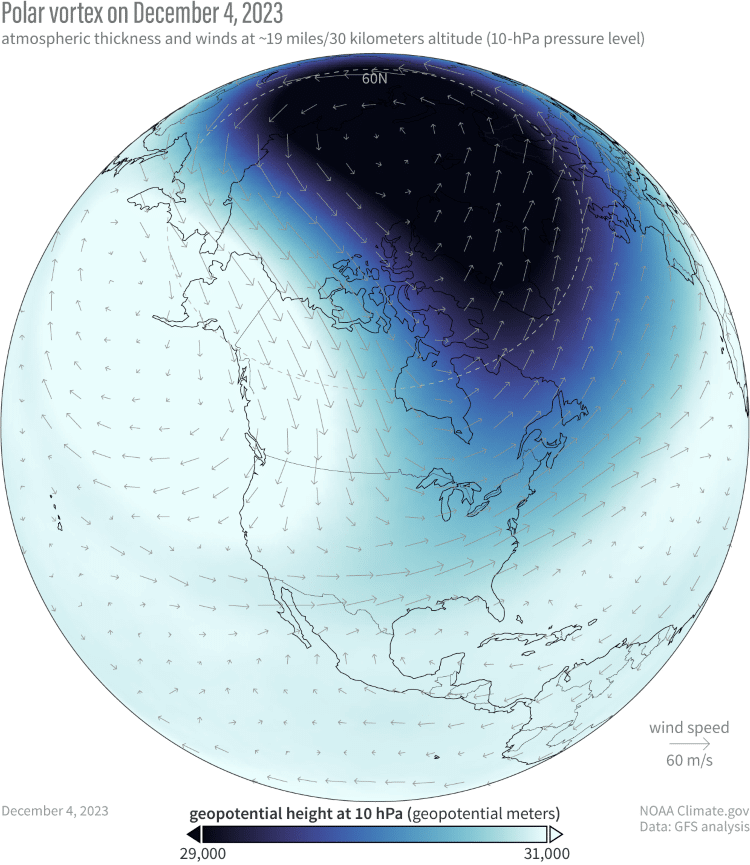
Photo: NOAA Climate.gov
The Antarctic Circumpolar Current (ACC) is a large ocean current—or polar vortex—that flows clockwise around the continent of Antarctica, with wind speeds of around 155 miles per hour. But due the impacts of climate change, the vortex has been gradually growing faster and faster over the past several years. The most recent change to the trajectory of the vortex occurred on March 4, when it started spinning backwards.
The existence of the vortex has been known to sailors for centuries, but geologists believe that the ACC has existed since the Antarctic continent separated from Australia about 34 million years ago. Because of this, scientists have long studied this phenomenon, including a recent study that was published in March 2024 that details the history of the vortex over a 5 million year period. It is not unusual for it to change its trajectory, as some polar vortexes can change for days, weeks, or even months at a time when temperatures in the stratosphere increase by around 90°F over the course of a couple of days. This is precisely what happened in early March.
According to NOAA’s polar vortex blog, the winds on the ACC are beginning to slow down, indicating that it will probably return to normal soon. In the past, disruptions to the polar vortex have caused widespread weather impacts across the globe. For example, in 2019, a massive cold front hit the Midwestern United States due to the vortex splitting apart into smaller currents.
As climate change continues to get worse, the polar vortex will continue to disrupt, probably at a more frequent rate. Other natural disasters, such as hurricanes and tornadoes, will also become more frequent and more dangerous. Stories like this emphasize the importance of fighting climate change and limiting the harm that we do to our planet.
In early March, a large polar vortex called the Antarctic Circumpolar Current (ACC) changed its trajectory. Researchers believe this was caused by a sudden spike in the temperature of the stratosphere and expect it to return to normal soon.

Photo: NOAA Climate.gov
h/t: [Live Science]
Related Articles:
Win the Trip of a Lifetime and Travel to Antarctica With a Professional Photographer
This Is What Antarctica Looks Like Beneath the Ice
100-Year-Old Negatives Discovered in Block of Ice in Antarctica
Icy Wilderness of Antarctica Captured in Beautifully Blue Landscape Photos
